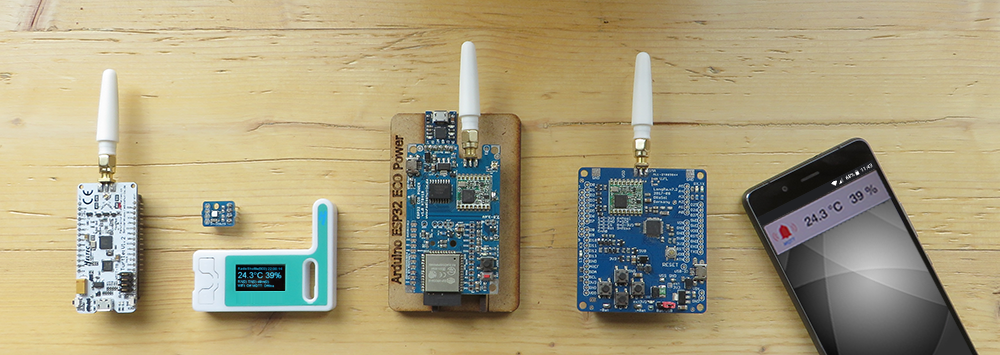Can the Turtle board also use WiFi?
No, the Turtle board has no WiFi functionality because WiFi requires a lot of power. However, the Turtle board is designed for very low energy consumption allowing the board to run up to 10 years on batteries.
Can the Turtle board also use Bluetooth?
No, the same here; the Turtle module does not support Bluetooth for the benefit of a long battery life.
How can I use the U.FL or SMA antenna connector?
On the right side of the board you will find both a U.FL and an SMA connector. An SMA antenna is already included in the shipping. Alternatively, a basic wire can be used as antenna. Further information can be found in the Technical Documentation section.
What is the maximum voltage for the Turtle pins ?
The external input voltage must not exceed 5 volts (3.4-5 V). The output voltage of the pins depends on the power supply and/or the battery condition and can be 2.1 to 3.6 volts, usually approx. 3 volts.
Can the power supply for external sensors be completely switched off?
The internal operating voltage (2.1-3.6 volts) can be switched by software via the “VEXT-SW” pin (on the right of the board). This is switched off by default so that external consumers, such as battery measurement, do not consume permanent power. The “VEXT-SW” pin can also be used to connect other loads such as sensors, for which the current is only switched on briefly when required.
Can I set any ID (device ID) per board myself?
No, you have to use the ID and the code provided in the OTP memory and automatically detected by the software. Of course, when sending a message, the device ID of the target device can be set as desired.
Can the Turtle board also be operated with AAA batteries?
Yes, with two standard AAA batteries, see the Technical Documentation page. The back of the board provides an already soldered-in battery holder.
Can NiMH rechargeable batteries be used?
The use of rechargeable NiMH batteries is supported. The deliver a voltage of 1.2 volts per cell. With two cells used, the total voltage yields 2.4 volts.
Can Lithium batteries be used?
Lithium cells are perfectly suited for operating the Turtle board! Compared to standard batteries or rechargeable NiMH batteries they have a considerably higher energy density. In addition, they deliver a nearly constant voltage during their life and still work even in very cold environments where standard batteries or rechargeable NiMH cells stop functioning.
Is operation via a USB power bank possible?
A USB power supply is supported and works perfectly, simply connect it via micro-USB. There are two problems to consider with a power bank: In “deepsleep” mode, the Turtle board requires so little power that various power banks switch off automatically on a regular basis, as they believe that no consumers are connected.
In addition, operation with a power bank is not energy-efficient, as the power bank internally converts the LiPo battery voltage from 3.7 V to 5.0 V, the Turtle board then converts the 5.0 V back to approx. 3.3 V. These two conversions are permanent and consume energy.
Can I switch 230 V loads with the Turtle board?
So-called external “solid-state” relays can switch 230 V loads with a 5 V input voltage. The MCU ports can control several external solid-state relays (SSR) via a simple transistor circuit.
What is the maximum battery input voltage?
The input voltage via the battery connection can be between 2.1 and 3.6 volts. More than 3.6 V is not permitted and will damage the hardware.
Can the battery voltage be measured?
Yes, the battery voltage is automatically measured when starting. The “Utils/utils.cpp” file includes the BatteryVoltage() function which delivers the battery voltage.
